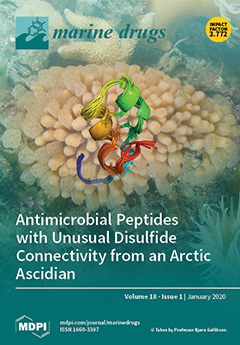One of the most widely distributed soft coral species, found especially in shallow waters of the Indo-Pacific region, Red Sea, Mediterranean Sea, and also the Arctic, is genus
Sacrophyton. The total number of species belonging to it was estimated to be 40.
[...] Read more.
One of the most widely distributed soft coral species, found especially in shallow waters of the Indo-Pacific region, Red Sea, Mediterranean Sea, and also the Arctic, is genus
Sacrophyton. The total number of species belonging to it was estimated to be 40.
Sarcophyton species are considered to be a reservoir of bioactive natural metabolites. Secondary metabolites isolated from members belonging to this genus show great chemical diversity. They are rich in terpenoids, in particular, cembranoids diterpenes, tetratepenoids, triterpenoids, and ceramide, in addition to steroids, sesquiterpenes, and fatty acids. They showed a broad range of potent biological activities, such as antitumor, neuroprotective, antimicrobial, antiviral, antidiabetic, antifouling, and anti-inflammatory activity. This review presents all isolated secondary metabolites from species of genera
Sacrophyton, as well as their reported biological activities covering a period of about two decades (1998–2019). It deals with 481 metabolites, including 323 diterpenes, 39 biscembranoids, 11 sesquiterpenes, 53 polyoxygenated sterols, and 55 miscellaneous and their pharmacological activities.
Full article






